Sights and Activities
Below are the places we saw and activities completed while visiting South Africa:
Hermanus
We had a great opportunity to camp near Hermanus in Palmiet campgrounds. We spent two nights with the locals braaing (barbequing), playing soccer, frisbee, bocce, tossing the rugby ball, and at the beach. We were fully engulfed and learned so much about the South African culture.
City of Hermanus: we were fortunate during our camping trip to go to this beautiful city on the coast. Between June and November the city is known for whale watching, the Southern Right Whales go to this bay to calve. During our excursion, we were lucky enough to catch a glimpse of a few whales as we were getting ready to leave.
Birkenhead Brewery: also near Hermanus, we sampled all six of their beers while enjoying the gorgeous landscapes.
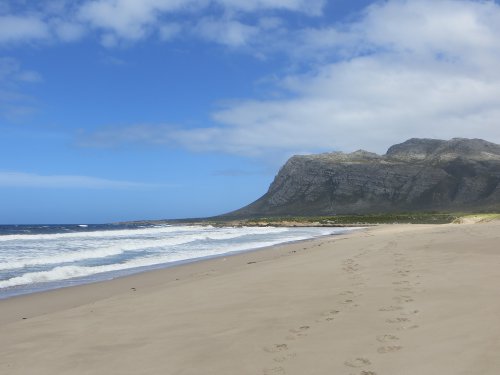
Cape Town
District Six Museum: this museum is as much a tribute as an exhibit of the black Africans that were displaced from their homes by forced evictions in the 1960’s and ‘70’s from district six.
Nelson Mandela Gateway: this is where the boats depart to Robben Island now for tourists and it is the same location where boats departed to take political prisoners during apartheid. The gateway also contains a small museum where we learned about the Irish movement to eliminate apartheid and contained many posters of that time.
Robben Island: our tour started by taking a 30-minute ferry to the island, then a bus trip around the island to learn about the different structures and their uses, the animals that live on the island, and to enjoy the spectacular views of the mainland and Table Mountain. We then got to the sad part of the tour where we were taken around the prison and the cells where the political prisoners were held. The island was used as a prison until 1996 and is a Unesco World Heritage Site preserving as a memorial to those who spent many years incarcerated here. Nelson Mandela spent 18 of the 27 years imprisoned here. It is difficult to imaging spending so much time incarcerated in a beautiful island without being free to enjoy it.
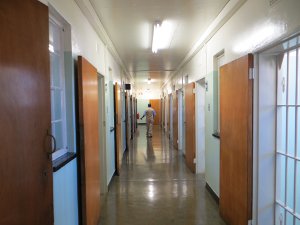
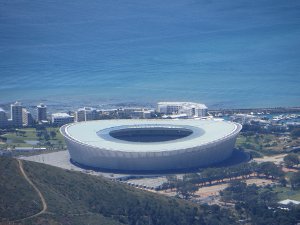
V&A Waterfront: this area is full of shops, restaurants, and bars. At Nobel Square, we were able to view statues of South Africa’s four Nobel Prize winners – Nelson Mandela, Desmond Tutu, Albert Luthuli and FW de Klerk.
Cape Town Stadium: we walked around this contemporary stadium, but unfortunately did not go inside.
Iziko Slave Lodge Museum: hosted in one of the oldest buildings in South Africa, dating back to 1660, the Slave Lodge was “home” to as many as 1000 slaves. The museum is devoted to the history, experience, and transportation routes of slaves and their descendants in the Cape. The museum also had a temporary exhibit on the life of Oliver Tambo. He along with Mandela opened the first black law firm of South Africa and was an ANC leader that exiled to London. He was the voice and face of the ANC internationally and was able to gain anti-apartheid support around the world.
Wine Tasting: we were fortunate to visit two local wineries: Nitida Winery and Altydgedacht Winery.
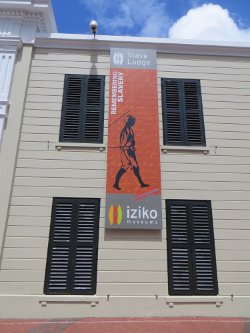
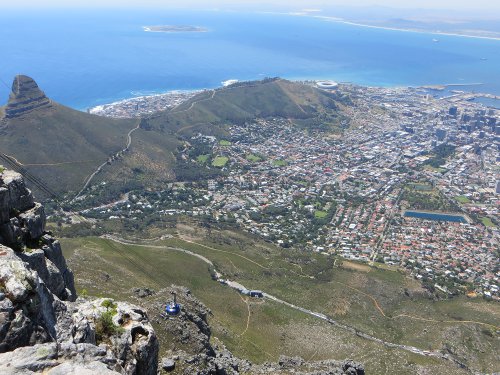
Table Mountain National Park: starting from the Northern part of the city made trekking up Table Mountain an all-day adventure. The route via Platteklip Gorge was a steep, difficult hike, but the once we made it to the top the rewards of the spectacular views were well worth it. The day was stunning and we were able to see as far as Camp Bay, the Cape of Good Hope, and Robben Island
Storms River
Tsitsikamma National Park: part of the Garden Route National Park , we enjoyed a day hike along Otter Waterfall Trail. We started at Storms River Mouth crossing over the suspension bridge and continuing along the coastline with spectacular ocean views and rock formations. We unfortunately did not make it to the waterfall because we ran out of time.
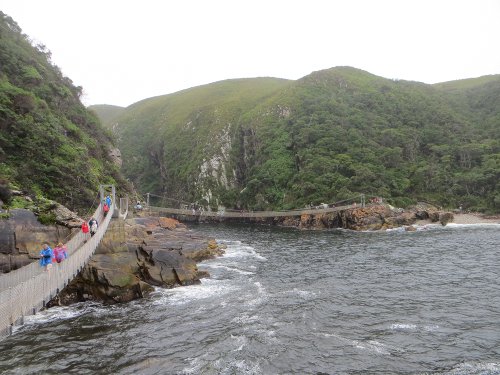
Coffee Bay
We enjoyed a few nights in this bohemian village surrounded with dramatic, beautiful beaches set in front of towering cliffs. Our days consisted of lying out on the beach or on top of cliffs overseeing the ocean and in the evenings our ears enjoyed African Tribal Drums while quenching our thirst with nice cold beers. We also had an opportunity to learn to play the drums.
Hole in the Wall: this is the name of a rock formation located about a two-hour hike from Coffee Bay. The hike goes through beautiful rolling hills full of local village life. The rock formation some meters into the ocean gets its name because of the hole located in between.

African Tribal Drumming
Umkomaas
Aliwal Shoal: the main reason for this visit was to be able to dive at one of the world’s best dive site, Aliwal Shoal. The morning started off with a motorized raft trip through rough waves, which turned out to be similar to a class 5, white-water raft ride. We then dove into waters with poor visibility and strong currents that had us breathing faster than usual. The dive only lasted about 25 minutes, one of our shortest dives ever. But the trip was made worthwhile by spotting a stingray underwater and on our way back we saw a school of dolphins!!

Durban
Beach Promenade: this newly revamped pedestrian highway was completely in time for the 2010 World Cup stretches six kilometers along the beach.


City Hall: this 1910 colonial building is located in the city center.
Durban Art Gallery: we viewed the small gallery of contemporary South African art and a temporary exhibit entitled Rorke’s Drift displaying African art during apartheid.
KwaMuhle Museum: the museum had powerful exhibits on how life was in Durban prior to and during apartheid. There was also a great temporary exhibition entitled ‘For Future Generations’, a documentation created by Hugh Tracey and the International Library of African Music about Southern Africa music: instruments, methods, video clips, and much more.
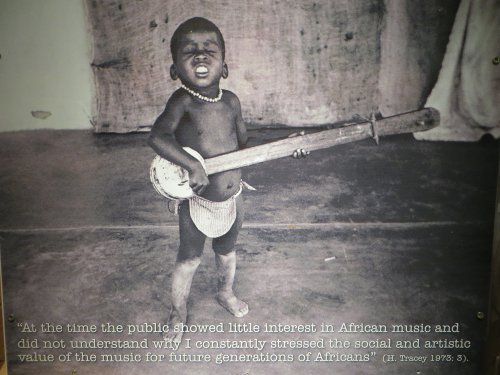
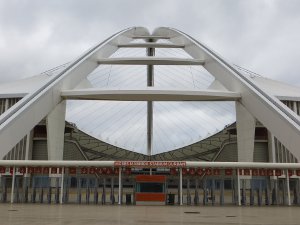
Moses Mabhida Stadium: constructed for the 2010 World Cup, the arch was inspired by the ‘Y’ in the country’s flag.
Bergville
We camped a few kilometers from Bergville at a backpackers that boasted beautiful views of a mountain range known as the Amphitheater. We took a short-day hike to view the surroundings and were delighted by the many birds and landscape.
Royal Natal National Park: with some of the Drakensberg’s most dramatic and accessible scenery, we went in search of Tugela Falls. Unfortunately, our hunt was unsuccessful, either a wrong turn or more time, but the six-hour hike in the gorge crossing streams and climbing chain ladders had very rewarding views. The decision to turn back was a wise one since we were drenched by a rainstorm on our drive back to camp.
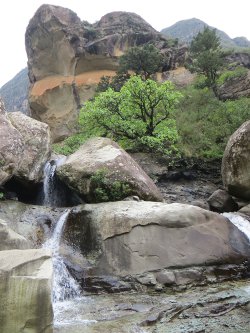
Long Tail Bird

Johannesburg
Apartheid Museum: this well-designed museum illustrates the rise and fall of South Africa’s era of segregation and oppression. The well worth five hours we spent viewing film, reading text, and listening to audio provided an insight into the architecture and implementation of the apartheid system, life during apartheid, the student movement of the ’80’s, the freedom of Mandela, the negotiation phases, and the first democratic election.
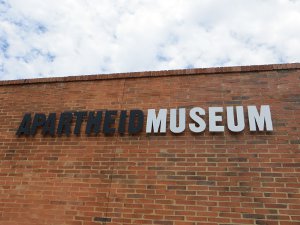
Mandela – A Long Walk to Freedom: we were fortunate to be in South Africa not only while Nelson Mandela was still alive, but also while the movie of his life premiered. We didn’t think twice to go watch the movie and left with better understanding of what life was as a “Freedom Fighter.”
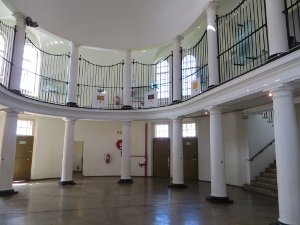
Constitution Hill: we explored this large complex consisting of various structures including the Old Fort, where white men were imprisoned; Number Four, the notorious apartheid prison that once held Nelson Mandela; the Women’s Jail, where Winnie Mandela was in solitary confinement; and Constitutional Court, home of South Africa’s constitution and the highest law of the land.
Pretoria
Church Square: the heart of Pretoria surrounded by public buildings, which include the Palace of Justice, where the Rivonia Trial that sentenced Nelson Mandela to life imprisonment was held.
Nelson Mandela’s Public Viewing: we were fortunate to be in South Africa while Nelson Mandela was alive and to be there at his passing. We waited in line for six hours to try to pay our respects to the legend, a mere fraction compared to the time he endured to see freedom. Unfortunately, we must have been less than an hour away from the gates before they closed… It was still fascinating to see all his supporters waiting in line, chanting, and coming out to say goodbye to a true hero.
Celebrating Nelson Mandela’s Life
Soweto
Once a neighborhood where the white Afrikaans “stored” the black Africans, now a trendy, artistic neighborhood.
Mandela House Museum: the original house where Nelson Mandela lived with his first wife, Evelyn, and later with his second wife, Winnie, now turned into a museum with interesting family photos and other memorabilia.

Hector Pieterson Museum: this powerful museum illuminates the role of Sowetan life in the struggle for independence. The movement follows the incidents of June 16, 1976, when a peaceful student protest against the introduction of Afrikaans as a language of instruction was violently suppressed by police. In the resulting chaos police opened fire and a 13-year-old boy, Hector Pieterson, was shot dead. The following hours and days we saw students fight running battles with the security forces in what would become known as the Soweto uprising.
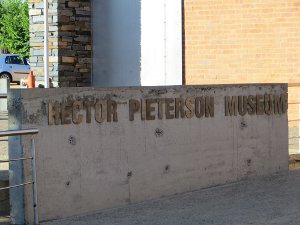
Kruger National Park
We spent six days driving around in search of wild animals in one of South Africa’s premier national parks. The experience was like no other, definitely one of the highlights of Our First World Trip. We were like kids full of excitement looking out the window for any type of movement and once we found the animals the feeling was majestic. Impalas, elephants, lions, giraffes, zebras, wildebeests, rhinoceros, hippopotamuses, hyenas, and leopards are just a few of the ones we saw. You could read more about our adventure in our article.
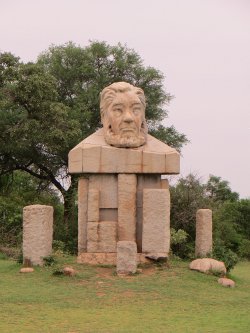
Blyde River Canyon National Park
This spectacular canyon boasts some of South Africa’s most impressive natural features. Unfortunately, we were not able to see a lot of it, the day we drove out to the viewpoints the weather was not cooperating and the canyon was cloudy. We were able to catch a small glimpse at the World’s End viewpoint, but could not see the Three Rondavels. The weather was worse at Wonder View and God’s Window viewpoints, but we were able to get a clear sight of the spectacular Lisbon Falls.
